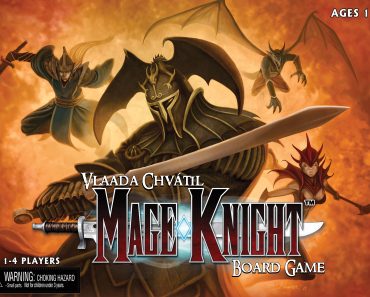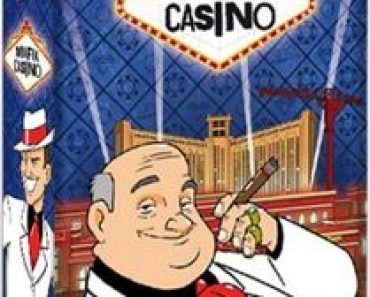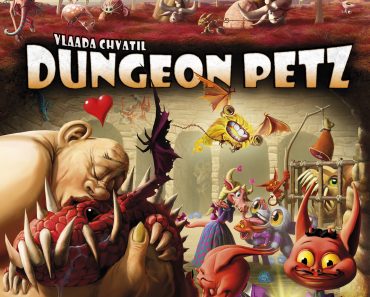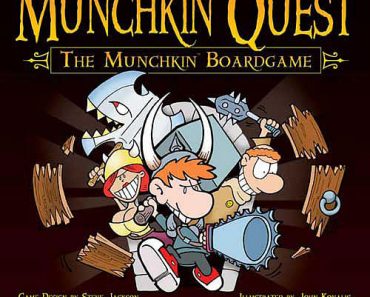Review
-
Game Rating
Introduction to RuneWars
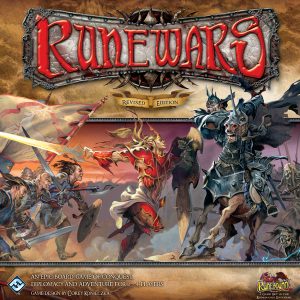 RuneWars is a set-based miniatures game published in 2010 by Fantasy Flight Games, the same publisher as a number of other miniature-based games such as Star Wars: X-wing.
RuneWars is a set-based miniatures game published in 2010 by Fantasy Flight Games, the same publisher as a number of other miniature-based games such as Star Wars: X-wing.
RuneWars shares some of the spirit of previous Fantasy Flight games such as the Game of Thrones Living Card Game (LCG.) Similar to the concept of the Living Card Game, where play is based off of larger sets, RuneWars is a self-contained miniatures game.
Unlike many miniature games which focus on collecting packs of miniatures, or assembling powerful armies based off of many small booster sets, RuneWars base boxes contain all the necessary figurines to play all the factions of an individual set – no collecting required.
This means that players are on an equal playing field with each version. Players will not have a disadvantage because they have not yet managed to locate a particularly rare card or figurine. While RuneWars does have expansions, these expansions follow the same philosophy as the base set: all figurines and playable factions are included in the box so that players are on an equal playing field.
RuneWars is set in the well-established world of Terrinoth, the home world of the original Runebound adventure game. Terrinoth has been built and expanded throughout numerous versions of Runebound as well as many expansions to the game, and as a result represents a colorful high-fantasy universe, with a recognizable style and flavor.
While Runebound is a hero-based adventure game featuring quests and dungeons, RuneWars is a faction-based strategy game set around controlling and expanding a vast empire. Players who enjoy resource management, army strategy, and medieval fantasy city defense will likely find much to enjoy in RuneWars.
The game features dynamic, customisable boards with numerous terrain types. In addition, seasons play a major part in the game, changing the conditions that players – and their empires – must consider many times throughout the play of a single game. There are four distinct factions, each of which possesses a very unique play style which can appeal to different types of players.
One faction may boast diplomatic and defensive strengths, while another throws all of its strength into offence, and each team has completely unique units which assist them in solidifying their playstyle.
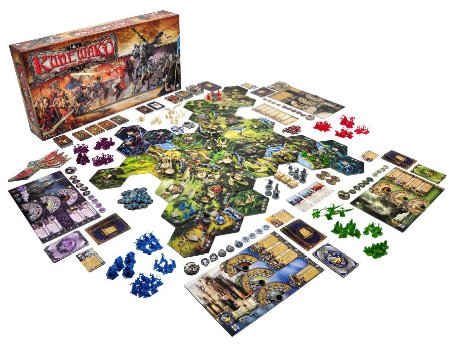
Components of Play and Number of Players
RuneWars is designed for two to four players and has an average playtime of between three and four hours. All the pieces needed to play are contained in the box, and the box has a rather large list of components. Before explaining setup a number of these components deserve a more detailed explanation:
1. Figurines
a. Units
i. These figurines make up the bulk of a player’s active army, and vary greatly in size and power. There is also a set of units colored white, which are used to represent neutral factions on the map.
b. Heroes
i. These figurines represent powerful hero units which can perform a number of powerful functions in addition to participating in battle.
2. Tokens
a. Activation Tokens
i. Used to indicate areas of the map that player’s units have moved into during the current game-year.
b. Battle Marker
i. Used to indicate the geographical location of a battle on the main map.
c. City Tokens
i. Used to indicate the locations of neutral cities and some of their statistics and benefits. City tokens contain a number of useful icons and stats players can take advantage of throughout play.
d. Defeated Hero Markers
i. Used to indicate where a hero character died and left their treasures. These treasures can be collected by other players.
e. Influence Tokens
i. Used to influence neutral units and participate in diplomacy
f. Resource Arrows and Washers
i. Attached to the faction sheet and used to indicate changing supplies of the resources of food, wood, and ore.
g. Rune Tokens
i. One of the most important resources of the game, Runes, are indicated by these tokens. Players controlling six areas marked with valid runes control one of the possible victory conditions.
h. Stronghold Tokens
i. Used to indicate player-made fortresses, which allow for advanced battle defenses, unit recruitment, and more.
3. Foundational Components
a. Faction Sheets
i. Used for player organisation and faction selection. Faction sheets contain important information of the unique factions and also help the player keep track of resource income.
b. Reference Sheets
i. Used to reference the many neutral units in the game as well as detail diplomacy with various neutral units and locations. Also contain important exploration references.
4. Cards
a. Fate Cards
i. These cards act as a form of random number generation representing the less controllable aspects of combat, diplomacy, and events.
b. Hero Cards
i. Reference cards which explain a heroes abilities and powers.
c. Objective Cards
i. These cards are handed out to players during setup and detail a randomized bonus goal to be accomplished during play. Completing the goals outlined on these cards rewards players with a Rune.
d. Order Cards
i. Identical cards given to each faction representing actions players will choose from and resolve during each season of the game-year.
e. Quest Cards
i. Outline the parameters of various quests that players’ heroes can undertake for rewards.
f. Reward Cards
i. Represent the items and bonuses a hero has accumulated. These can be lost on death, and should be considered incredibly valuable. Some rewards can lead to the acquisition of Runes.
g. Season Cards
i. Detail season-based events that occur in Terrinoth. There are four color-coded decks, one for each season.
h. Tactics Cards
i. Detail special abilities players can use at various times, usually incredibly powerful and possible of changing the tide of events significantly.
i. Title Cards
i. Represent titles players can attain throughout gameplay by taking “Acquire Power” actions. These can lead to the collection of Runes.
j. Victory Cards
i. Possessing a victory card allows a player to attempt to win, so long as they control six Runes when they use the victory card.
This summarises most of the major components of the game. Now that the basic function of each piece has been outlined, setup for play can begin.
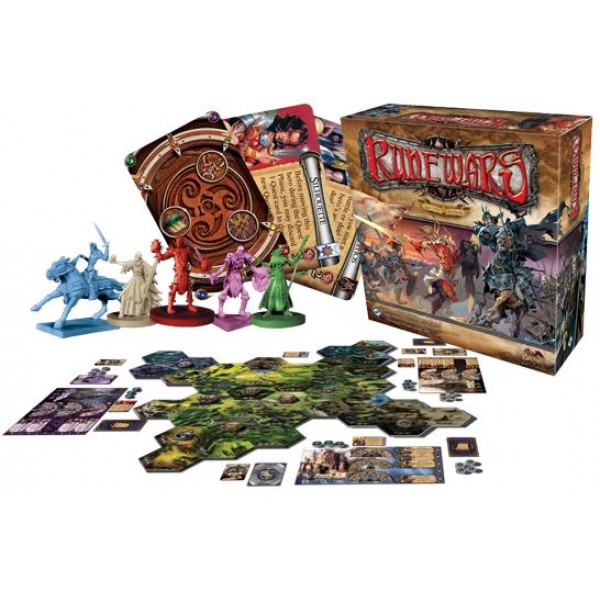
Setup
Before beginning play the first time, players should ensure that the faction sheet resource dials are constructed. They are simple, to click together, but very important to play. Once this has been done, the setup for play can begin.
Setup for RuneWars has a strict order that must be followed for setup to be balanced. This order is outlined and explained below:
1. Choose “First Player”
a. The deck of fate cards should be shuffled and then one card dealt out to each player. The player whose fate card holds the highest number becomes the “first player.”
2. Select Factions
a. The first player picks factions first, and gathers all the colour-coded components for that faction. After the first player, picks proceed in clockwise order.
3. Construct the Game Board
a. Separate all quest cards marked “Setup Quests,” shuffle, then deal two cards face up to each player
b. Players should collect the map tiles that are referenced on their Setup Quest cards this includes special “puzzle fit” pieces, which have special construction rules outlined in detail in the game rulebook.
c. The first player places their first map piece first, and then placement continues one piece at a time, clockwise until all map pieces have been set. Map tiles must be placed in the center of the play space and must touch at least two other edges of other map tiles (of course, this does not apply to the first two pieces set.) Some map tiles have red mountain and blue water border markers. These should not be placed parallel to another mountain or water border marker, they can however, form chains.
d. Once the map tiles have been laid, each player collects “home realm” tokens equal to the number of players. Starting with the first player, each player will set up all of their realm tokens such that the markers touch at least three borders which are not mountains or water, and are at least three spaces away from another player’s home realm tokens. Note: if legal placement is impossible, map tiles must be cleared and placed again in a different construction.
e. Next, each player should take one Rune token and one False Rune token. Starting with the first player and continuing clockwise, Runes and False Runes should be placed secretly, face down, on tiles that are not adjacent to home realms. Runes can only be placed one per tile.
f. After runes have been set, the player to the left of the first player should take their unique “home realm tile” and place it such that it replaces tiles marked with the home realm tokens.
g. Following the neutral unit icons on each tile, place neutral units.
h. Finally, shuffle the city tokens and place one on each map tile marked with the city icon.
4. Construct the Quest Deck
a. This requires some sorting. All quests referring to tile types that have not been used to construct the map should be removed. Afterwards, shuffle all remaining quest cards.
5. Starting Resources
a. On each player’s faction sheet, there will be red highlighted numbers for each resource. These indicate the starting resource levels. Arrows for each player should point to this level.
6. Strongholds and Forces
a. All players, in clockwise order from the first player, should place a stronghold token somewhere in their home realm. Afterward, they should recruit units using the resources they possess and distribute them through their realm as they see fit. Unit recruiting is outlined on the faction sheet.
7. Heroes
a. Good and Evil hero cards should be shuffled separately. Afterwards, deal each player a single hero from the deck that matches their alignment. Players can then place their hero anywhere within their realm. Shuffle the hero decks together after this is done.
8. Place Cards
a. The Fate, Quest, Reward, Tactics, Hero, two Objective, and four Season decks should all be shuffled separately and placed within reach of the players. Also place all title cards face up somewhere nearby.
9. Place Markers/Tokens
a. All tokens should be placed within reach of the players. Remaining Runes and False Runes should be stacked separately, face-up, nearby the token piles.
10. Tactics and Influence
a. Referencing the faction sheets, players should draw tactics cards and influence tokens based off of the designated amounts per faction.
11. Starting Quests
a. Each player should draw two starting quest cards from the quest deck
12. Objective cards
a. Each player should draw one Objective card that matches their alignment.
Once objective cards are drawn, setup concludes and the first “season” or round of the game begins.
Gameplay
RuneWars progresses through three overarching mega-steps:
1. Resolve Season
2. Choose Order
3. Resolve Order
Seasons continue in cycle until the seventh winter is reached. If no player has won the game by the seventh winter, the player controlling the most Runes wins the game. Game-years pass through four rounds: spring, then summer, then fall, then winter.
Resolving a Season Card:
The first player should draw a new season card from the deck corresponding to the current season. Following the instructions on the card, players should follow the season’s primary ability. After the primary ability has been resolved, players should resolve the secondary ability. Primary abilities vary per card, while secondary abilities are season-specific. A glossary of secondary ability icons can be found in the player’s handbook. Season specific abilities can involve restricting unit limits, trigger quests, or give bonus resources.
Choosing and Resolving Order Cards:
After the season card has been resolved, each player should choose an order card from their hand. This card will determine what actions they are taking as a faction this season. There are eight order cards:
1. Strategise
a. This order card allows the player to move units to friendly or empty tiles in order to set up for future action.
b. Supremacy bonus: Draw additional tactics cards based off of resource dial reading.
2. Mobilise
a. This order card allows player to move units in hostile territory, start battles, and initiate diplomacy.
b. Supremacy bonus: Resolve this order twice.
3. Conquer
a. This order card functions identically to mobilise, but has a different supremacy bonus.
b. Supremacy bonus: Grants bonuses to sieging enemy strongholds
4. Harvest
a. This order card allows players to gather resources from the tiles they control.
b. Supremacy bonus: Allows a player to gather resources from developments and then also build additional developments.
5. Recruit
a. This order card allows a player to declare a resource type and then receive all units indicated by that resource dial’s current space and all lower spaces. These units can be set at any friendly stronghold.
b. Supremacy bonus: The player can declare two resource types and gather units.
6. Rally Support
a. This order card allows players to take advantage of city benefits.
b. Supremacy bonus: The player can recruit a new hero with influence points.
7. Acquire Power
a. This order card allows players to gather influence tokens.
b. Supremacy bonus: The player can acquire a Title card.
8. Fortify
a. This order card allows players to build new strongholds and repair old ones. It also allows players to move Rune tokens to safer locations.
b. Supremacy: No supremacy bonus
One order card can be used per season, and once they are used they cannot be used for the rest of that game-year. The Spring season refreshes order cards for the new year.
Once players have chosen their order cards, they should place them face down and then reveal them simultaneously. In each round, the player with the lowest numbered order card.
If there is a tie, the player with a higher influence score goes first. All order cards have standard abilities and Supremacy bonuses.
Supremacy bonuses only trigger when cards played in the previous season have a lower order number than the currently played card. Because of this, all cards played in spring will automatically trigger supremacy, but playing high-scored cards early on in the year can limit further action.
The gritty details of resolving each action is considerably more complex than the summary listed above. As a result, actions will be broken down by function instead of order card below.
Movement:
Movement can occur from a number of orders. The Strategise order, the Mobilise order, and the Conquer order all allow motion in one way or another. Heroes, uniquely, can be moved during the quest phase.
Any time a player moves units into a space with enemy units, a battle occurs, which will be explained below. If a player moves units into a space with neutral units present, a battle or diplomacy must occur.
The strategise order allows for motion into adjacent friendly or empty areas. Additionally, strategise orders do not trigger “Activation.” Activation occurs whenever a Mobilise or Conquer order is issued.
Activation essentially functions as an army setting up and digging in. Because of this, units moved into activated tiles cannot move out of an activated without retreating, which has penalties, until the next spring. Heroes are the only units which can move freely in and out of activated tiles.
Mobilise and Conquer orders allow for a player to activate a tile and move units to that tile. Units must be within two squares away, and once they move into the activated tile, they will not be able to move until the next year (unless they retreat.) Units can pass through an activated area during a single move, but they cannot stop there without becoming entrenched in the active area.
If there are enemy units or neutrals in the activated tile, battle or diplomacy will result. Units with the “fast” special trait can be pulled by an activated tile from 3 tiles away.
A retreat moves all units from an activated area to one adjacent area and immediately routs them. When a unit is routed, it cannot draw cards during combat and it cannot be moved until the next spring.
At max, any tile can have 8 of a single player’s units within, except when a battle is beginning. At the beginning of a battle, a player can bring in additional units above the 8, however, they will have to retreat after victory, meaning there are downsides to such reinforcements.
Movement is complicated by water and mountains. Only flying units can cross over these types of borders, otherwise, units must find a way around. Luckily, in winter, water borders freeze over and can be crossed as usual.
Diplomacy:
When entering spaces with neutral units present, players can attempt diplomacy with them. Diplomacy follows these steps:
1. Spend Influence
a. A player needs to allocate between one and six influence tokens to the diplomacy action.
2. Draw Fates
a. The player should draw fate cards equaling the number of influence tokens allocated
3. Resolve a Fate
a. The player is able to choose one out of all of the fate cards drawn and resolve that card based on the card text. This could result in an alliance, a battle, or the neutral creatures fleeing and becoming routed.
Neutral units that have been successfully negotiated with are considered allied units. These units behave as if they belonged to the player they are allied with. However, if neutral units end their movement in an area not controlled by the allied player, they will break their allegiance and become neutral units again.
One final consideration in regards to diplomacy is that diplomacy (and battle) with neutral units considers all neutral units in the tile as a whole. Players cannot attempt diplomacy with individual units within a tile. It’s all or nothing.
Battle:
When battle begins, the attacking player should place a battle token on the battleground tile. All units participating in combat should be lined up with indicated rows on the faction sheet.
When battle is done with neutral units, the player to the left of the attacker controls the neutral units. Players must declare which heroes in the area will assist in battle, if any. Once these declarations are made, the battle proper can begin.
First, the attacker can play tactics cards or abilities which are marked with the words “start of battle” or “during your turn.” After the attacker has played these, the defender gets a turn to play this type of card.
After tactics cards are played there are five phases of battle that commence for each wave of initiative (indicated on the faction sheet). This means that there will be multiple cycles of five phases of combat, starting with units at initiative 1 and going up. These are the steps each initiative wave will do:
1. The attacking player selects a unit type from the current initiative wave and draws fate cards equaling the number of individual units of that type. Units cannot be doubled down on, so once a unit has been counted for a card, do not count that specific unit again for another card later.
2. The defender performs the same step the attacker just did.
3. Both players should check their fate cards for special ability icons, then simultaneously reveal those fate cards. The attacker resolves special abilities (referring to the faction sheet), then the defender does. They will resolve special abilities of their units as many times as they have drawn fate cards activating those abilities.
4. Next, the players should simultaneously reveal cards bearing the rout icon. With the attacker going first, followed by the defender, each player chooses a unit to rout for each drawn rout card.
a. Routed figures should be turned on their side. These cards can no longer be used to draw fate cards.
5. Finally, all players reveal fate cards bearing the damage icon. Then each player, starting with the attacker, chooses units to apply damage to.
a. Points of damage against a unit cause the unit to accumulate damage tokens. If the damage tokens add up to equal the health value of a unit (listed on the faction sheet), that unit dies.
b. Damage prioritises standing units and already damaged units. If a unit already has damage tokens, that unit must be damaged before new units can accrue damage.
c. Damage tokens are cleared at the end of battle.
6. Players should discard all fate cards and continue to the next phase of combat.
Once the rounds of combat have been completed for every unit, players need to add up their remaining strength. This is done by activating fortifications and adding their bonuses, then counting all remaining standing units, and then stronghold strength. After all these have been added together, the players should compare scores.
If the attacker outweighs the defender, they are the victor. If it is a tie, or the defender’s score outweighs the attacker, the defender is the victor.
The following steps should be taken once the victor is determined:
1. Strongholds
a. Attacker Victory
i. The attacker should remove the enemy stronghold and then place a damaged stronghold token of their own on the tile.
b. Defender Victory
i. Provided the attacker still has surviving units (but lost the battle) the defender should place a damaged stronghold token on the tile.
2. Heal
a. Players should clear all damage tokens from their units.
3. Retreat
a. The losing player must retreat all units and rout them.
b. Units that were in the tile but did not participate in battle are killed.
4. Replace units
a. The victor can move their units into the tile once the enemy units retreat.
Additionally, fights between heroes can and will occur throughout play. They are resolved much like standard combat.
Hero combat can only occur during the Quest phase, which is fully explained below. Hero combat unfolds as follows:
1. Declare Participating Heroes
a. The player who is beginning the fight can use only one hero and the defender can choose only one hero. Hero fights are always duels.
2. Start of Duel Abilities
a. This step unfolds exactly like in standard combat.
3. Draw Fate Cards
a. The attacker draws and reveals a fate card, followed by the defender.
4. Resolve Fate Cards
a. Resolving fate cards depends on the icon visible on the card. If there is a special ability icon, the hero may deal one damage or activate an ability on one of their reward cards. If it is a rout icon, the hero may prevent damage equal to the number next to the rout icon. If it is a damage icon, the hero may deal damage equal to the number listed next to the rout icon. If it is a blank card, no action is taken.
b. Any damage resolved during this phase happens at the same time so it is possible for heroes to destroy one another.
5. Resolve Battle
a. Damage dealt to a hero should be kept on the hero card if that hero is not killed. Hero damage and hero death behaves like unit death, but at a greater magnitude. In addition, when a hero is killed in battle, the victor of the battle is able to loot all their reward cards. When a hero dies as a result of a draw or when fighting a neutral quest monster, all of their Reward cards are placed in a special pile on the side of the play area, and a defeated hero marker is placed on the tile where the hero died. Any hero who enters this square can then loot the defeated hero and gain the reward cards.
b. If no heroes are killed in battle, both heroes remain on the same square and are not forced to retreat.
c. Heroes cannot undertake a quest on the same round they do battle.
It should also be noted that heroes can desert a player. This only occurs at special times when a faction’s alignment and a hero’s alignment do not match. Deserting heroes are shuffled back into the hero deck and all reward cards are sent to the reward discard pile.
Quests:
During the second part of a season (the resolving of the secondary ability), the Quest phase is triggered. The player with the lowest Order card starting, each player can order each of their heroes to undertake one of the following actions:
1. Move
a. Heroes can move up to two tiles and then attempt a quest or begin a duel. Heroes do not activate tiles, even if they are preparing to duel.
2. Heal
a. The hero heals all currently held damage tokens, returning to full health. This action is only possible if the hero is currently in friendly land.
3. Train
a. This action allows a hero to increase two of their attributes by one, or one attribute by two. Players should place training tokens on the hero to indicate what training a hero has undergone. Only one training token can ever be placed on any single attribute.
In order to undertake a quest, a hero must be on a tile indicated by the quest. The player can read the Quest cards they were dealt at the beginning of the game in order to determine where to send a hero to complete the quest. Once the hero is in the designated area, the player can reveal the quest card and follow the instructions in order to have the hero undertake the quest. Quests have varied rewards. When a Quest has been completed, the card is discarded and a new Quest card is drawn.
With all the basics of gameplay now established, it is time to talk victory.
Victory
As stated above, the game ends at the end of the seventh game-year, in winter. If this time limit is reached, all players must reveal their Rune tokens and add them up. The player with the most Runes wins. If there is a tie, the player holding the most influence tokens wins.
It is possible, however, to win the game before the seventh winter by collecting six Runes. When a player has collected six Runes, they must reveal their runes and then manage to hold on to them for a full game-year.
To indicate this, when a player is ready to declare victory, the player must place their victory card on top of the current season’s draw pile. If that card is drawn, the declaring player wins. Victory cards cannot be stacked.
If another player wishes to declare victory, they must wait until the next season. Of course, if a victory card is drawn and that player no longer controls six Runes, they do not win.
If this occurs, the player must take back their victory card and the game must progress as usual. A player who manages to control six Runes until their card is drawn is the Victor!

